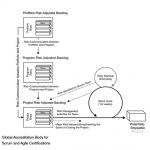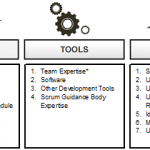Quality control refers to the execution of the planned quality activities by the Scrum Team in the process of creating deliverables that are potentially shippable. It also includes learning from each set of completed activities in order to achieve continuous improvement. Within the cross-functional team, it is important to have the skills necessary to perform quality control activities. During the Sprint Retrospect Meeting, team members discuss lessons learned. These lessons act as inputs into continuous improvement and contribute to the improvement of ongoing quality control.
Quality is required not only in products, but also in processes. Quality assurance refers to the evaluation of processes and standards that govern quality management in a project to ensure that they continue to be relevant. Quality assurance activities are carried out as part of the work. In fact, quality assurance is a significant factor of the definition of Done. The deliverable isn’t complete if appropriate quality assurance has not been conducted. Often, quality assurance is demonstrated during the Sprint Review Meeting.
Product Owners for respective projects, programs, and portfolios can monitor and evaluate quality assurance activities to ensure each team continues to agree and comply with the quality standards that have been set. End-to-end quality assurance may be addressed during final testing of the product, a Release, or a Sprint. A comparison of the number of issues encountered versus the number of User Stories completed can be done. The product components that have defects can be incorporated as Prioritized Product Backlog Items (PBIs), which can be worked upon by either the team or by one person at certain times during the Sprint, depending on the number of defects.
At times, the Scrum Guidance Body can define the processes and documents that can be referred to by Scrum Teams when doing their projects to ensure that uniform quality norms are followed by all projects within the company.









